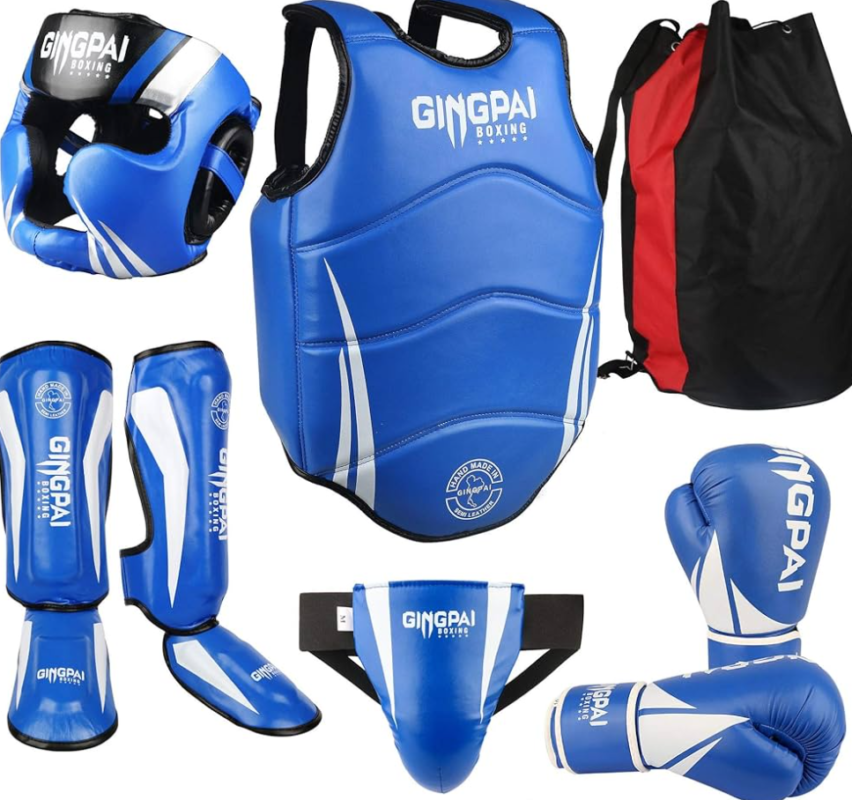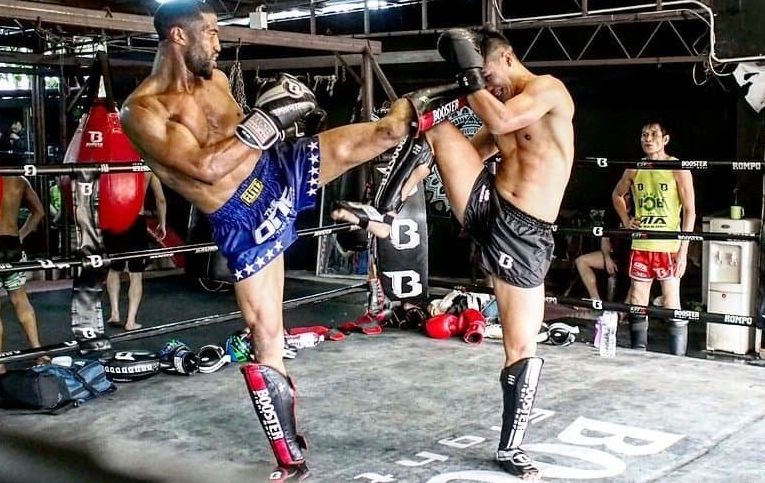Muay Thai Health&Safety
How to Choose the Right Protective Equipment in Muay Thai
Introduction
Muay Thai, also known as the “Art of Eight Limbs,” is a combat sport originating from Thailand that uses stand-up striking along with various clinching techniques. Given its physically demanding nature, choosing the right protective equipment is essential for both safety and performance. Whether you’re a beginner or a seasoned fighter, investing in high-quality gear can significantly reduce the risk of injury and improve your training outcomes.
Understanding Muay Thai Protective Equipment
The Importance of Protective Gear
Protective gear in Muay Thai isn’t just about safety; it also enhances performance by allowing fighters to train harder and longer without fear of injury. Proper equipment can help prevent common injuries such as cuts, bruises, sprains, and fractures.
Essential Protective Gear in Muay Thai
The core protective gear required for Muay Thai includes gloves, hand wraps, shin guards, mouthguards, groin protectors, and headgear. Each piece plays a crucial role in safeguarding different parts of the body.
Choosing the Right Muay Thai Gloves
Types of Muay Thai Gloves
- Training Gloves: Suitable for general training, bag work, and pad work.
- Sparring Gloves: Designed with more padding to protect both the wearer and their sparring partner.
- Competition Gloves: Lighter and less padded, used in official matches.
Sizing and Fit
Choosing the right size is critical. Gloves are typically sized in ounces (oz), ranging from 8 oz to 16 oz. Heavier gloves (14-16 oz) are recommended for training, while lighter gloves (8-10 oz) are used in competitions.
Material and Construction
Look for gloves made from high-quality leather or synthetic materials with reinforced stitching. Good wrist support and secure closure systems (like Velcro or laces) are also important features.
Hand Wraps: Essential Support for Your Hands
Importance of Hand Wraps
Hand wraps provide additional support to your wrists and knuckles, reducing the risk of injury during training and sparring.
Choosing the Right Hand Wraps
- Length: Common lengths are 120 inches (for smaller hands) and 180 inches (for larger hands).
- Material: Cotton wraps with a slight stretch are ideal for a snug fit.
- Wrap Style: Look for wraps with Velcro closure for ease of use.
Shin Guards: Protecting Your Legs
Types of Shin Guards
- Slip-on Shin Guards: Lightweight and comfortable, ideal for beginners.
- Strapped Shin Guards: Provide better protection and are suitable for advanced practitioners and sparring.
Fit and Comfort
Shin guards should fit snugly without slipping during movement. Ensure they cover both the shin and the top of the foot adequately.
Mouthguards: Guarding Your Teeth
Importance of a Mouthguard
A mouthguard protects your teeth, gums, and jaw from impact. It’s essential for preventing dental injuries and concussions.
Types of Mouthguards
- Boil-and-Bite: Moldable mouthguards that offer a custom fit.
- Custom-fitted: Made by a dentist for the best fit and protection.
Groin Protectors: Ensuring Safety in Sensitive Areas
Choosing the Right Groin Protector
- Comfort: Should fit comfortably without restricting movement.
- Material: Look for protectors made from durable, high-impact resistant materials.
- Fit: Adjustable straps ensure a secure fit.
Headgear: Protecting Your Head
Importance of Headgear
Headgear reduces the risk of cuts, bruises, and concussions during sparring sessions.
Choosing the Right Headgear
- Fit: Should fit snugly without shifting during movement.
- Padding: Ample padding around the forehead, cheeks, and chin.
- Visibility: Ensure the headgear does not obstruct your vision.

Additional Protective Gear
Elbow and Knee Pads
For extra protection during intense sparring or training sessions, elbow and knee pads can be beneficial.
Anklets and Ankle Guards
Anklets and ankle guards provide additional support and protection for the ankles, which are prone to injury in Muay Thai.
Maintenance and Care of Muay Thai Gear
Cleaning and Hygiene
Regular cleaning of your gear is essential to prevent the buildup of bacteria and odors. Follow the manufacturer’s instructions for cleaning each item.
Inspecting for Wear and Tear
Regularly inspect your gear for signs of wear and tear, such as frayed stitching or cracked material, and replace any damaged items promptly.
FAQs
How often should I replace my Muay Thai gloves?
Gloves should be replaced every 6-12 months, depending on the frequency of use and condition.
Can I use boxing gloves for Muay Thai?
While boxing gloves can be used, Muay Thai-specific gloves are designed to accommodate clinching and are generally more suitable.
What’s the difference between Muay Thai and kickboxing shin guards?
Muay Thai shin guards are typically longer and provide more coverage, including the top of the foot, which is crucial for blocking kicks.
Do I need headgear for all training sessions?
Headgear is primarily used during sparring to reduce the risk of head injuries. It’s not necessary for all training sessions.
How should a mouthguard fit?
A mouthguard should fit snugly around your upper teeth without being too tight, allowing you to breathe and speak comfortably.
Is it essential to use hand wraps under gloves?
Yes, hand wraps provide additional support and protection to your wrists and knuckles, which gloves alone do not offer.
Conclusion
Choosing the right protective equipment in Muay Thai is crucial for both safety and performance. By investing in high-quality gear and ensuring a proper fit, you can train more effectively and reduce the risk of injury. Remember to regularly maintain and inspect your equipment to ensure it remains in good condition. Equip yourself properly and enjoy the full benefits of this dynamic and challenging martial art.

